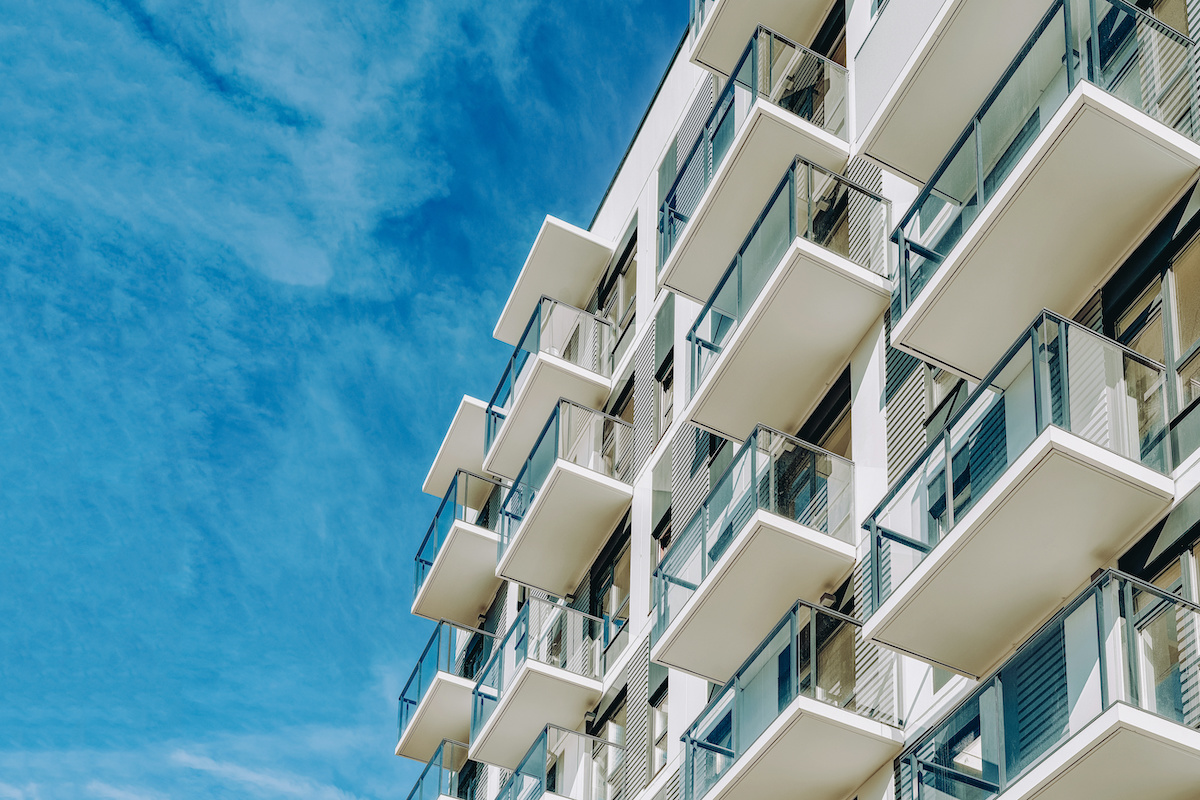Think your place has character? Think again. All around the world homes are being built with a level of creativity that will make your bricks and mortar seem decidedly boring and beige.
Whether as a result of climate necessity, culture, geographical constraints or a high density population, these unique designs are as captivating as the structures themselves.
Amazing cave houses in Cappadocia, Turkey. Picture: Getty
From fairytale Italian dwellings with pointy roofs and underground hideaways in the scorching outback, to tiny capsule homes and awe-inspiring ice hotels, these 10 amazing architectural styles are as far from cookie-cutter as you can get.
Underground homes, Coober Pedy, Australia
Deep in the South Australian outback in the opal mining town of Coober Pedy, the scorching desert sun dictates a rather unique housing solution: living underground.
Here, daytime temperatures can exceed 40 degrees and these underground homes (known as ‘dugouts’) offer natural insulation against the heat.
An abandoned underground dwelling is seen cut into the side of a hill in Coober Pedy, Australia. Picture: Getty
Carved directly into the area’s sandstone hills, what began as basic shelters for early opal miners seeking respite from the extreme temperatures has evolved into surprisingly spacious and modern homes with some boasting multiple levels and even underground gardens.
“These homes are a brilliant example of climate-adaptive design,” said Rob McGauran from MGS Architects. “It’s my personal belief that underground construction — especially in extreme heat zones—represents a forward-thinking solution for both comfort and sustainability. Housing in areas such Coober Pedy have adapted without the need for energy-guzzling air conditioning.
Underground home in Coober Pedy, Western Australia. Picture: Getty
“Climate change and extreme bushfire events are making our traditional housing extremely costly, vulnerable and sometimes uninsurable. I think we will see more great models of housing, that are at least partially embedded in the earth, emerging as a housing type responsive to these challenges we are now facing.”
Ice hotels, Scandinavia and Canada
The ice hotels of Scandinavian countries and Canada offer an unforgettable (but temporary) storybook-like living experience.
Built anew each winter from ice and snow, these otherworldly constructions are more than just accommodation, they're works of art.
Lobby entrance inside the Ice Hotel at Jukkasjarvi in Swedish Lapland. Picture: Getty
Inside, intricate ice sculptures adorn the rooms, and even the furniture is carved from ice. While the interior temperature hovers around freezing, guests are kept warm with specialised thermal gear and toasty fur bedding.
“Ice hotels are more art installations than traditional homes,” said interior designer and founder and CEO of Kurved by Design, Kellie Richardson.
Ice hotel in Quebec, Canada. Picture: Getty
“From a design standpoint, it is all about temporary spectacle, sculptural lighting, thematic zones and layering texture visually rather than physically, since everything is cold and hard. Comfort is a challenge, so the design must evoke emotional warmth rather than physical warmth. These spaces celebrate impermanence and artistry, but they are of course not suitable for long term living.”
Cave Dwellings, various locations
Humans have sought shelter in caves for millennia — in fact, caves are the earliest form of human shelter.
From the troglodyte villages of Cappadocia in Turkey, where entire communities carved intricate homes and churches into the soft volcanic rock, to the cliff dwellings of the Ancestral Puebloans in the southwestern United States, these structures offered natural protection and insulation.
Cave church in Zelve Ancient City at Cappadocia in Nevsehir, Turkey. Picture: Getty
And in some parts of the world this ancient form of dwelling is still in use to this day. In China’s northern provinces, for example, millions of people reside in modernised cave homes, as do populations in countries including Spain, Jordan, Turkey and Georgia.
The Cliff Palace is the largest Ancient Puebloan ruin in Mesa Verde National Park, Colorado. Picture: Getty
“I’m genuinely in awe of modern cave homes,” said interior designer and director at Ace Property Agency, Rebecca Cardamone.
“They’re such an amazing blend of natural beauty and modern design. The way these spaces flow with their organic curves and raw textures gives you a one-of-a-kind canvas to create something really special. And despite what some might think, modern cave homes are anything but basic — they come with full plumbing, electricity, internet, ventilation, and even skylights to let in natural light.
Underground traditional house, Tunisia. The dwellings are carved into the rock and offer a cool environment in summer and warm in winter. Picture: Getty
"The temperature underground also stays stable, so you barely need heating or cooling, which means serious savings on energy bills. Studies also show that curved and organic shapes in interior design, like those naturally found in caves, can actually reduce stress and promote a sense of wellbeing too.”
Trulli Houses, Puglia, Italy
Believed to have originated as temporary shelters and storehouses the conical, whitewashed stone huts in the sun-drenched region of Italy’s Puglia have a history that stretches back centuries.
Made using locally abundant limestone without mortar as a clever way to avoid high taxation in feudal times, the thick stone walls provide excellent insulation against the intense Mediterranean heat.
Trulli houses in Alberobello town. A trullo is a traditional Apulian dry stone hut with a conical roof. Picture: Getty
“These traditional homes are made from dry-stone construction,” explained architecture expert and founder of Hello Electrical, Jason Rowe.
“The absence of mortar not only creates a distinctive aesthetic but also offers natural cooling, perfect for the region's hot summers. Many of these homes have stood for centuries, showcasing the durability and sustainability of the design.
Traditional whitewashed Trulli houses in Italy. Picture: Getty
Roundhouses, various locations
The circular ‘roundhouse’ is a style of architecture that has been seen across a diverse range of indigenous cultures globally.
Typically made using locally sourced wood, earth and animal hides, the circular form reflected spiritual beliefs, social structures, and practical considerations.
A yurt in Ulgii Province, Mongolia. Picture: Getty
For nomadic groups like those in Central Asia with their yurts, the circular design is easily transportable and offers structural integrity against strong winds. For some North American tribes, the roundhouse served as a communal dwelling and ceremonial space, symbolising unity and connection to the natural world.
“Round spaces feel cosy, communal, and flow in a way that’s perfect for group living or big families,” commented Ms Cardamone.
“With the rise of biophilic design, which brings the outdoors in, round homes create a beautiful balance between modern comfort and nature-inspired living. It’s no wonder more designers and architects are currently embracing the circle again. Natural light also behaves differently in round structures, bouncing more evenly throughout the space - which can enhance mood, reduce eye strain, and even help regulate sleep cycles.”
Floating Villages, Southeast Asia
In the waterways of Southeast Asia, particularly in countries like Vietnam, Cambodia, and Thailand, entire communities have adapted to life on the water, constructing homes on stilts or buoyant rafts.
This way of life often evolved out of necessity, due to seasonal flooding or limited land availability. Over generations, these communities have developed intricate systems for living, working, and even schooling on the water.
Koh Panyee Island, Phang Nga Bay, Thailand. Picture: Getty
The houses, often built from lightweight materials like bamboo and wood, are designed to withstand the constant movement of the water. Living in a floating village offers a unique cultural perspective and a deep connection to the aquatic environment.
“Floating Villages in Southeast Asia, in countries like Cambodia and Vietnam, allow communities to adapt to seasonal flooding while maintaining a high standard of living,” said Mr Rowe.
Aerial view of the The Clan Jetties of Penang with its wooden houses on stilts in Malaysia. Picture: Getty
“The houses are built on stilts or floating platforms, demonstrating ingenious adaptability to the aquatic environment and providing a unique solution to rising water levels due to climate change.”
Barong Houses, Philippines
The traditional houses of the northern Philippines known as ‘barong.’ are remarkable examples of indigenous architectural ingenuity adapted to a mountainous terrain and climate.
Typically elevated on sturdy posts, these one-room dwellings provide protection from moisture and pests and the steep, pyramidal roofs (traditionally made of grass) are designed to shed heavy rainfall.
Homes in Banaue, Luzon Island, Philippines. Picture: Getty
The construction techniques, passed down through generations, demonstrate a deep understanding of local materials and environmental conditions. Living in a Barong house is a testament to the rich cultural heritage and architectural skill of the Filipino people.
“Barong houses are lightweight, elevated and deeply rooted in cultural meaning,” explained Miss Richardson. “Their airy design allows for great ventilation, ideal in tropical climates.”
Stilt houses, Southeast Asia, Africa, and South America
In tropical regions prone to monsoonal flooding and high humidity, stilt houses have long been a practical and effective housing solution.
Found extensively in Southeast Asia, parts of Africa, and South America, these elevated homes (built on stilts made of wood or bamboo) lift living spaces above floodwaters, improve air circulation to combat humidity, and offer protection from ground-level pests and animals.
Stilt houses in the Peruvian Amazon. Picture: Getty
“Stilt houses offer a unique blend of functionality and aesthetic charm making them a perfect choice for homes in tropical climates,” said Miss Cardamone.
“Raised on stilts, these homes allow for panoramic views of the surrounding landscape, fostering a strong connection with nature. The open, elevated layout of stilt houses not only addresses the practical demands of tropical climates but also enhances spatial perception, offering interiors that feel expansive, breezy, and intimately connected to their surroundings.”
Capsule apartments, Japan
Japan's answer to the urban squeeze? The capsule apartment. Forget sprawling floor plans and overflowing closets, these ingenious micro-dwellings are the ultimate in efficient living.
While space is at a premium, clever design maximises every square inch, often incorporating fold-down beds and integrated storage. While very much a ‘no-frills’ approach to housing, for those prioritising location and functionality over square footage, the capsule apartment is a great solution.
Capsule apartment building in Tokyo. Picture: Getty
“Capsule apartments are the epitome of efficiency,” commented Miss Richardson.
“From a design standpoint, everything must serve a dual purpose. Think foldaway desks, wall mounted storage and transformable furniture. The challenge lies in making such small spaces feel human.You have to be incredibly organised and diligent to live in one of these abodes!”
3-D printed homes, various locations
When it comes to home design and dealing with the ongoing housing shortage the solution might just be…printed. A rapidly evolving technology that promises faster construction times, reduced waste, and the potential to create unique and cost-effective dwellings.
The first 3-D printed house in Germany. Picture: Getty
Though seemingly still in the realms of science fiction, 3-D printed homes are rapidly becoming a realty. In Australia, for example, the first one-bedroom home was printed in Gymea Bay, NSW, in May 2023.
“We are seeing rapid progress in the development of 3-D printed housing,” said Mr McGauran. “With the development of more sophisticated robotics, 3-D computer-aided Design and AI, 3-D printed homes will become mainstream and portable with great benefits in particular for remote communities where labour is unavailable.”



















 English (US) ·
English (US) ·